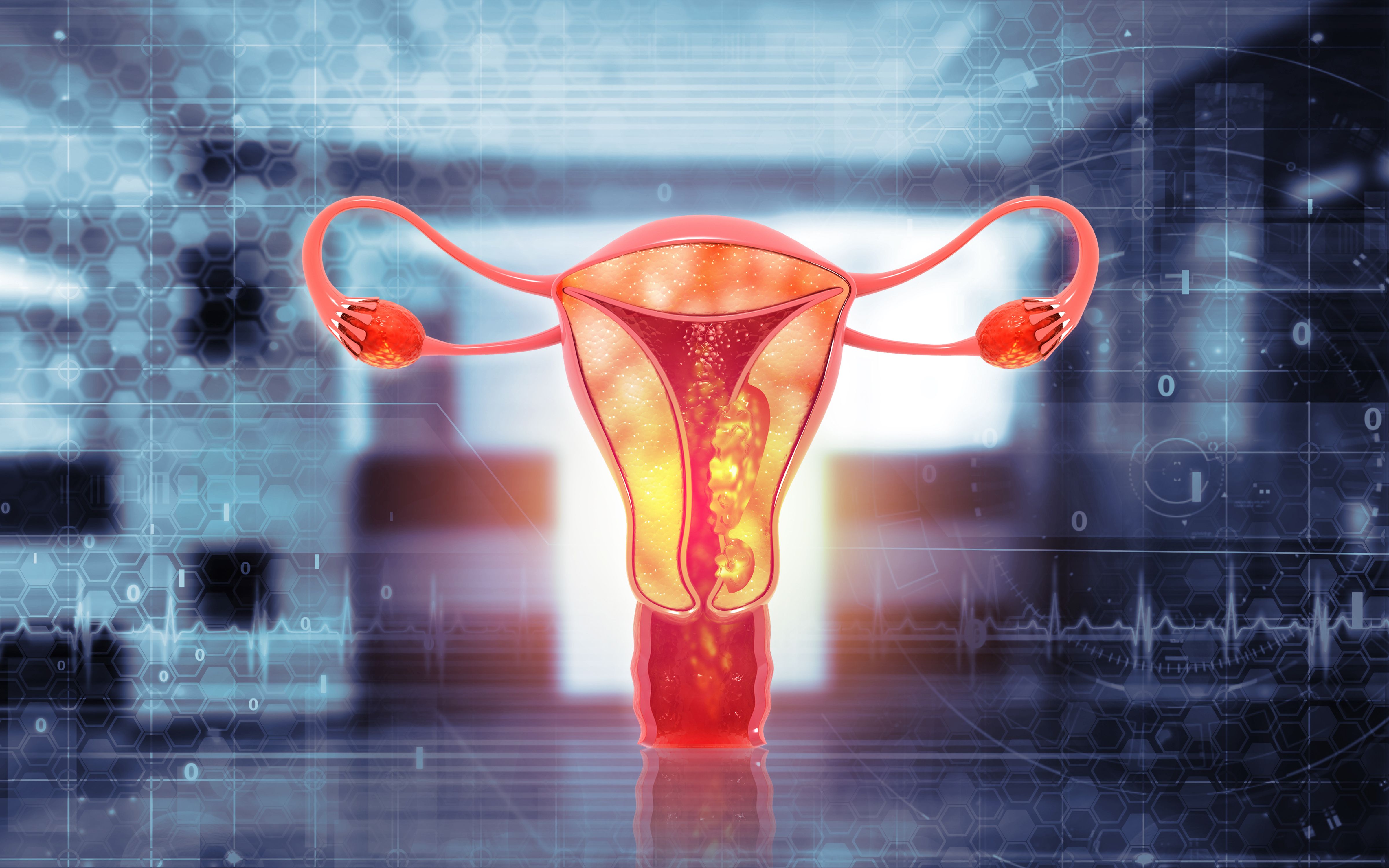Fast Symptom Recovery in Endometrial Cancer—Except for High-Risk Groups
A recent study identified key risk factors that link with increased symptom burden in patients with endometrial cancer.
Female reproductive system diseases. Uterus cancer and endometrial malignant tumor as a uterine medical concept. 3d illustration: © Crystal Light - stock.adobe.com

Women with endometrial cancer often experience a significant burden of symptoms at diagnosis. However, research has shown that many of these symptoms, as measured by various patient-reported outcome (PRO) tools, improve within a year and return to levels seen in the general population.1
A study published in the Journal of Cancer Survivorship: Research and Practice, found key risk factors to associate with increased symptom burden among patients with endometrial cancer, providing valuable information during clinical visits. Through the further understanding of these factors, clinicians can better personalize treatments for their patients and make informed referrals for supportive services.
“We identified a clinically significant symptom burden at the preoperative endometrial cancer visit, which generally improved with greater time since the diagnosis,” wrote the study authors.
The study sought to evaluate the correlation between patient and treatment characteristics with longitudinally collected PRO measures with the goal of creating a data-informed description of the experiences of women with endometrial cancer who are undergoing treatment.
In this single-institution, prospective cohort study, women newly diagnosed with endometrial cancer scheduled to undergo a hysterectomy were enrolled if they were at least 18 years of age, had no previous cancer diagnosis, spoke English, and were not cognitively impaired. Enrollment in the study went from November 2017 to March 2021.
Women completed baseline PRO questionnaires in clinics prior to hysterectomy, as well as at follow-up appointments at months 6 and 12. The administered questionnaires were National Institutes of Health Patient Reported Outcomes Measurement Information System (PROMIS), and investigators assessed anxiety, depression, fatigue, sleep disturbance, pain, physical function, and ability to participate in social roles.
A total of 352 potentially eligible participants were approached to participate in the study and 226 (64.2%) consented. Of the 226, 39 were excluded, leaving 187 in the analytic sample. Ninety-three percent of patients (n = 174) completed the questionnaire at 6 months and 68.7% (n = 103) completed it at 12 months. The 12-month questionnaire was added after study initiation, so it was only requested from 150 women enrolled.
Of those included in the study, baseline characteristics showed most women to be White (95.7%) and obese (75.4%). The median age of patients at the time of diagnosis was 62 years. A total of 52.5% of women lived ≥ 50 miles from the hospital, 46.5% had private insurance, 65.8% were never smokers, and 44.4% reported alcohol use. Moreover, 54.6% of patients had hypertension and 21.4% had diabetes.
The majority of patients (93.1%) enrolled had robotic-assisted laparoscopic surgery while 64.2% had sentinel with or without paraaortic lymphadenectomy. Most patients (78.1%) also had low-grade endometrioid disease and stage I disease (78.6%), and 24.6% and 24.6% of patients had received chemotherapy and/or radiation.
Findings from the study showed that women with endometrial cancer reported significantly higher levels of anxiety, fatigue, sleep problems, pain interference, and lower physical function compared with the general population. Most of these symptoms improved within 6 months, except for physical function, which remained significantly lower even after a year.
Of note, anxiety was particularly high at the beginning of the study (about half a standard deviation above the general population); however, it returned to normal levels within 6 months and remained stable thereafter.
Several factors correlated with experiencing worse symptoms throughout the study, including younger age, having Medicaid/none/self-pay insurance, having diabetes, and currently smoking. Additionally, women with more aggressive cancer types, later disease stages, or those receiving additional treatment experienced worse fatigue at the 6-month mark, although this returned to normal by 12 months.
Overall, this research provides valuable insights for clinicians to help manage the anticipated symptom course of endometrial cancer survivors following their diagnosis and treatment.
“Future studies focused on the trajectory of symptoms following primary endometrial cancer treatment and survival outcomes will be conducted in this cohort to advance our understanding of prognostic significance of PRO measures in this patient population,” concluded the study authors.
REFERENCE:
Sinnott JA, Torkashvand E, Meade CE, et al. Changes in prospectively collected patient-reported outcomes among women with incident endometrial cancer. J Cancer Surviv. Published online January 24, 2024. doi:10.1007/s11764-024-01536-z
Lenvatinib-Pembrolizumab Duo Delivers Impressive Results in Endometrial Cancer
September 18th 2024The combination of lenvatinib and pembrolizumab showed promising results in treating recurrent endometrial carcinoma, demonstrating significant antitumor activity and improved survival rates compared to standard therapy.
Read More